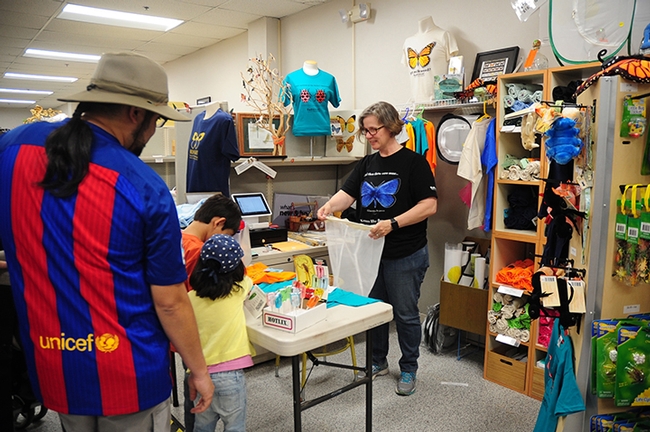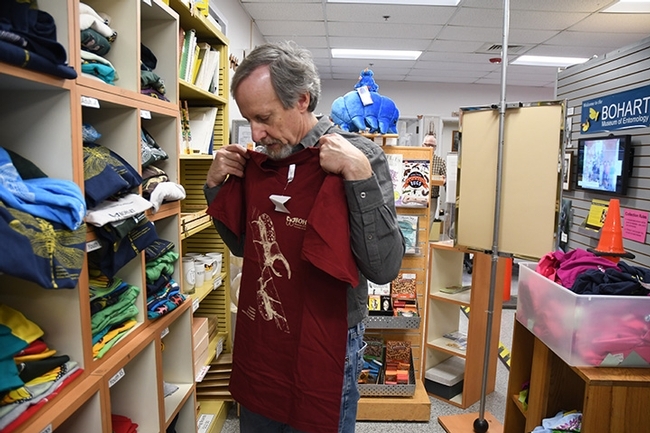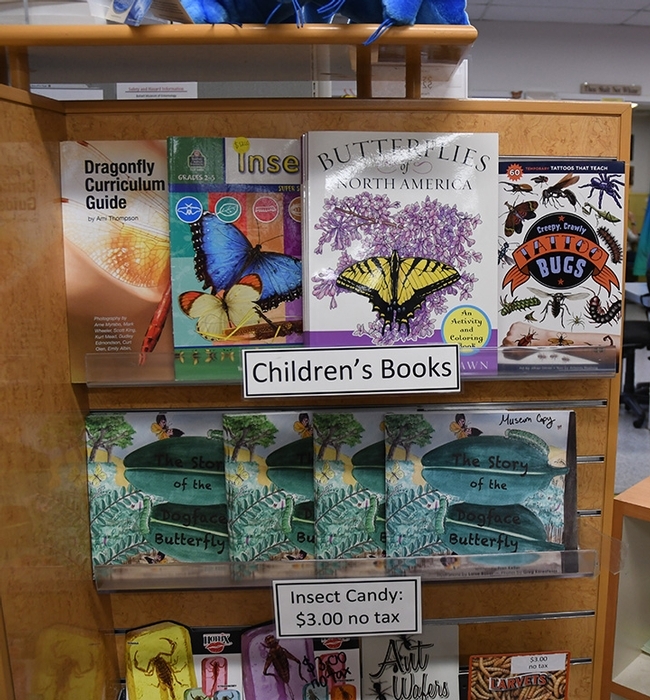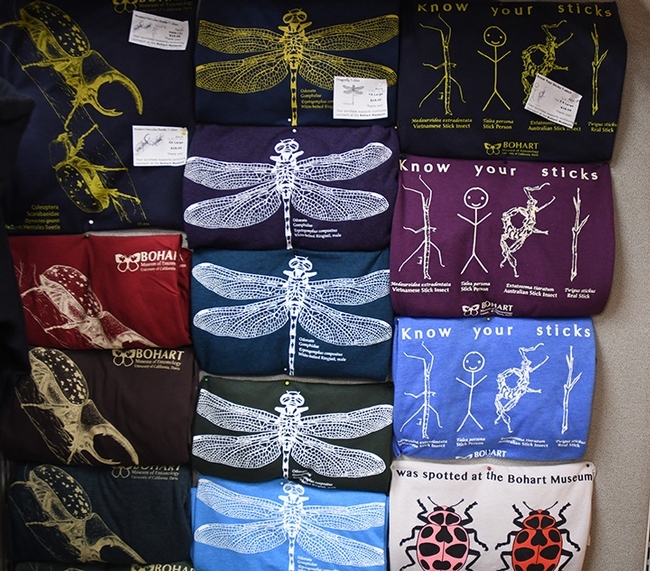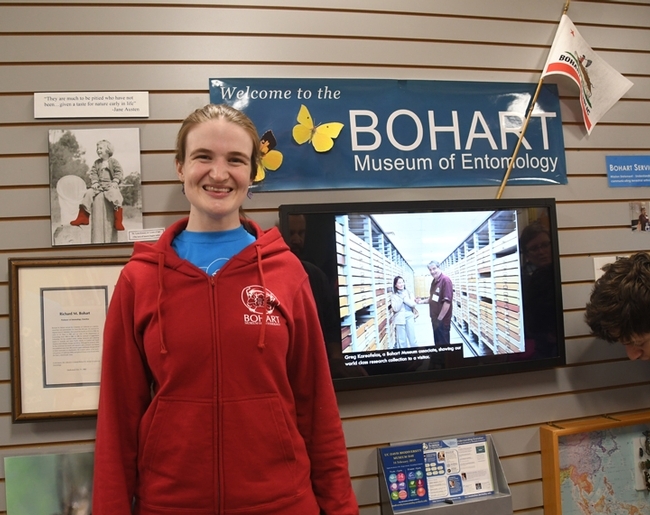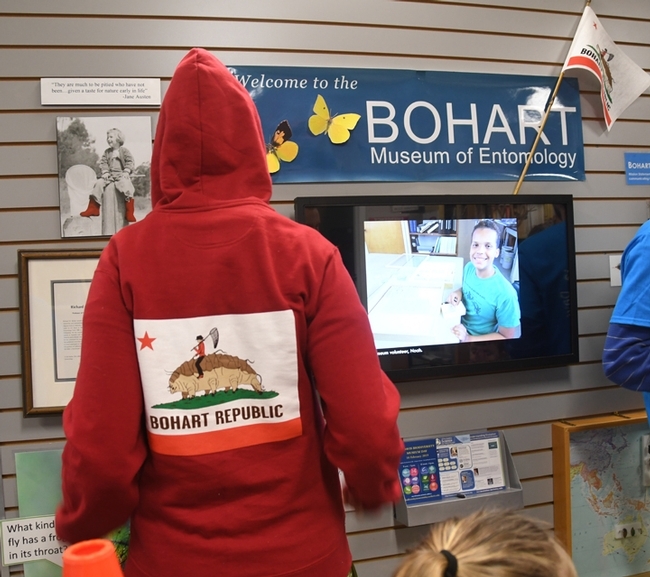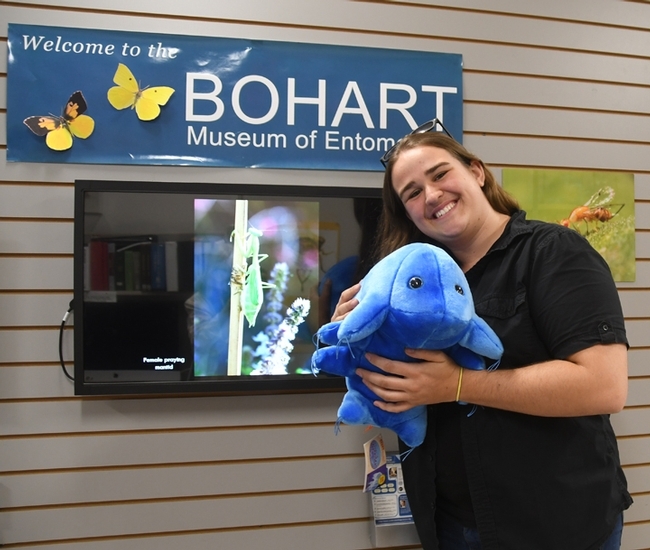- Author: Kathy Keatley Garvey
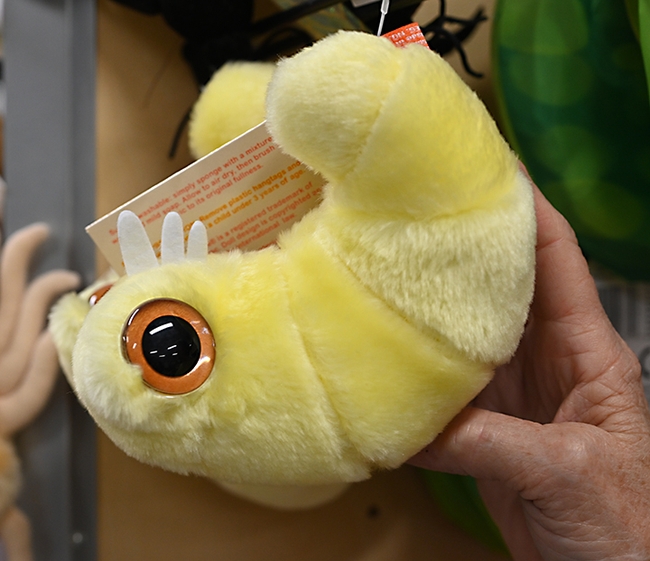
Not a creature was stirring, not even a mouse.
The stockings were hung by the chimney with care,
In hopes that St. Nicholas soon would be there.--Clement Clarke Moore (1779-1863), 'The Night Before Christmas'
What will be in your Christmas stocking?
Stocking stuffers are usually tiny, fun, or meaningful gifts or something that makes you feel special. For a child, the "stuffings" are often a toy, book, stickers, crayons, pencils, coins, fruit and candy. Adults may receive that coveted piece of jewelry, lottery tickets, a book or cash. Or gag gifts guaranteeing a smile or a laugh.
How about a bed bug, fruit fly, tick or louse in your Christmas stocking?
Santa's helpers who visit the Bohart Museum of Entomology gift shop will have a field day selecting plush toy animals for bug enthusiasts.
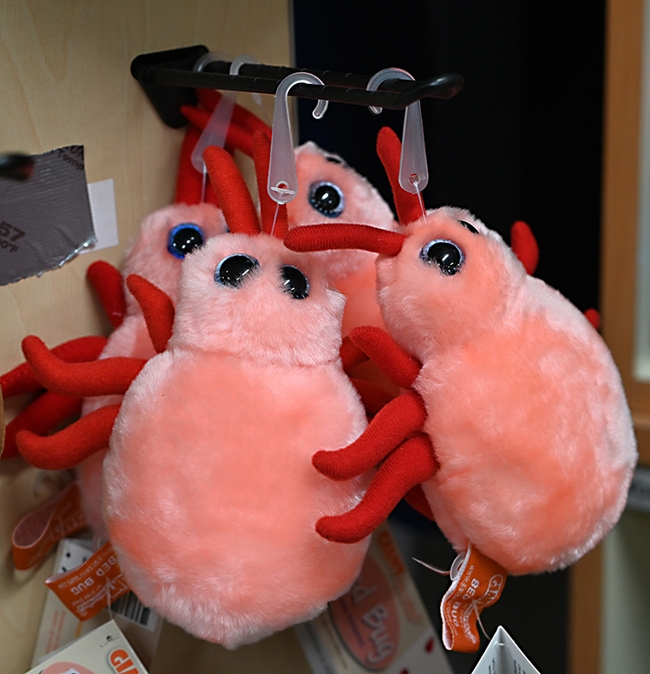
UC Davis distinguished professor Lynn Kimsey, director of the Bohart Museum, especially likes the yellow bookworm, (Anobium punctatum).
Ticks (Ixodes scapularis), bed bugs (Cimex lectularius), louse (Pediculus capitis), black ants (Lasius niger), fruit flies (Drosophila melanogaster) are popular. The crab louse (Pthirus pubis)? Maybe not so much.
These critters are crafted by Giant Microbes, headquartered in Stamford, Conn.
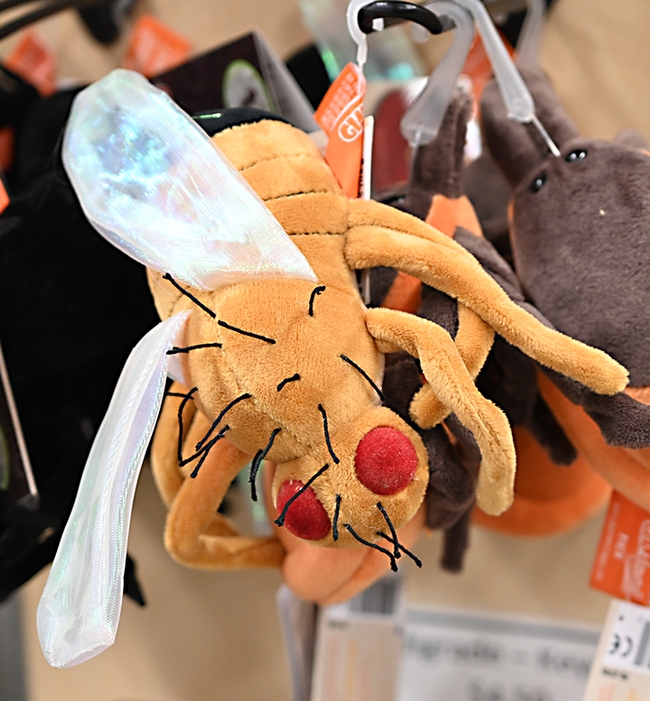
Proceeds benefit the Bohart mission "of documenting and supporting research in biodiversity, educating and inspiring others about insects, and providing state-of-the-art information to the community," Kimsey says.
Home of a global collection of nearly eight million insect specimens, the Bohart Museum houses the seventh largest insect collection in North America, and the California Insect Survey, a storehouse of the insect biodiversity of the state's deserts, mountains, coast, and the Great Central Valley. It maintains one of the world's largest collections of tardigrades. It also houses a live "petting zoo" that includes Madagascar hissing cockroaches, stick insects and tarantulas.
The Bohart is located in Room 1124 of the Academic Surge Building, 455 Crocker Lane, UC Davis campus. It is open to the public Monday through Thursday, from 8 a.m. to noon and from 1 to 5 p.m. (holiday hours remain the same this week).
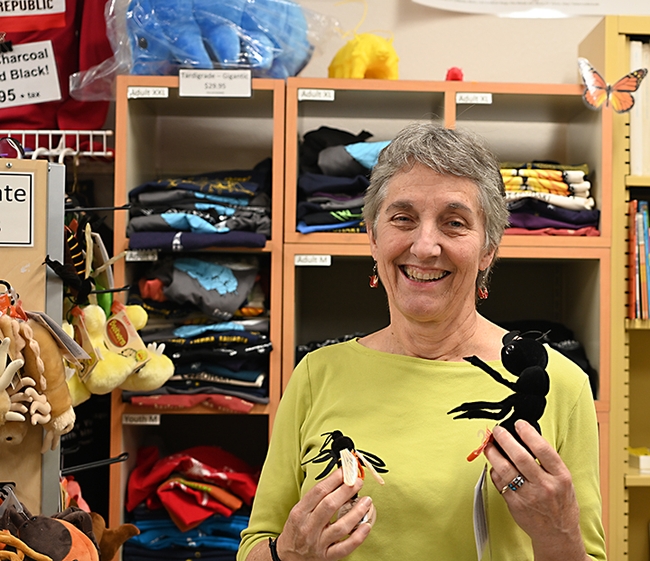
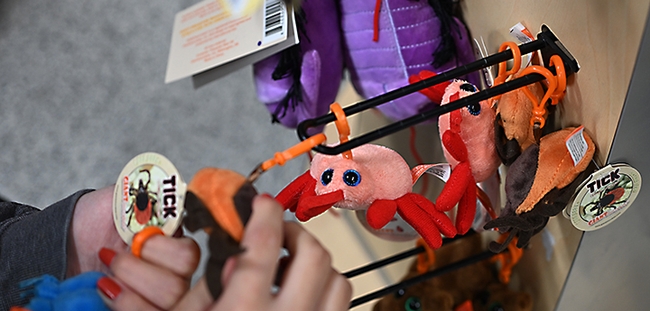
- Author: Kathy Keatley Garvey
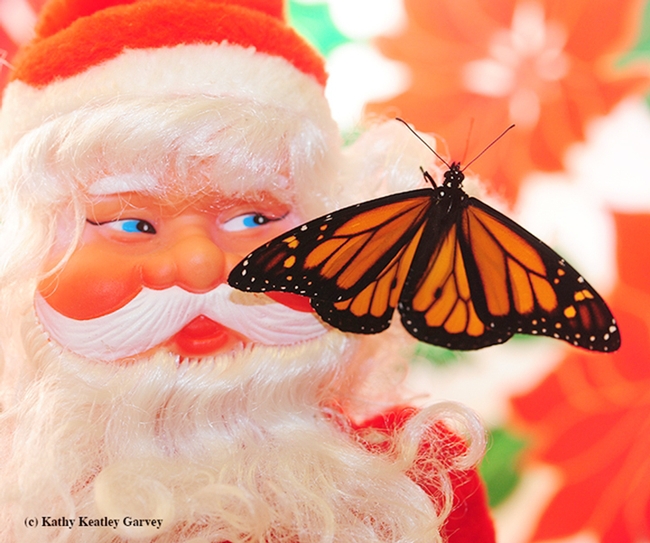
Yes, he does.
The jolly ol' gent wants to assure that no one has a "silent night," not with all the insect-themed gifts there: jewelry such as bee and monarch pins and beetle wing earrings; books for children and adults; note cards; T-shirts and hoodies; stuffed toy animals; posters showcasing dragonflies and California state insect, the dogface butterfly, coffee cups with the dogface butterfly motif; stickers; insect snacks; and hand-turned lathed pens by entomologist Jeff Smith, who curates the Lepidoptera collection at the Bohart.
One of the children's books is "The Story of the Dogface Butterfly," authored in 2013 by entomologist Fran Keller, a professor at Folsom Lake College, a Bohart Museum research scientist, and a UC Davis doctoral alumna.
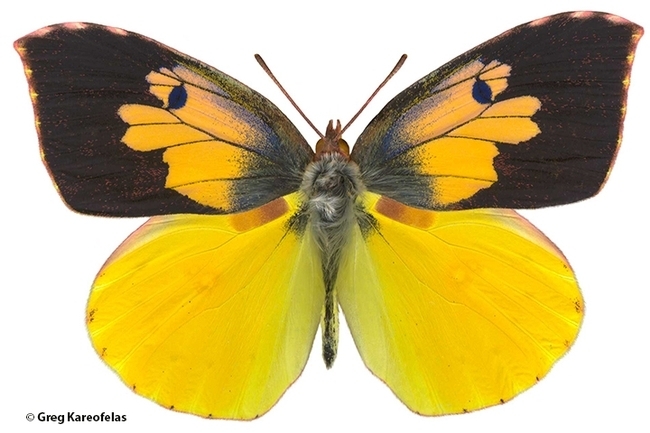
Found only in California, the rarely seen butterfly is also known as (1) "the flying pansy," referring to the male's spectacular black and yellow coloring, and (2) as a "dog head" butterfly (the markings on the male resemble a silhouette of a dog's head). The female is mostly solid yellow. The butterfly's major breeding ground is in Auburn in the Shutamul Bear River Preserve maintained by the Placer Land Trust (PLT).

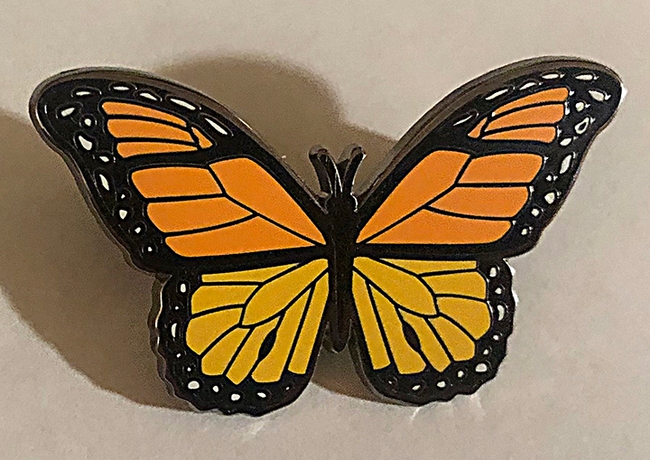
The insect museum, located in Room 1124 of the Academic Surge Building, 455 Crocker Lane, UC Davis campus, is open to the public from 8 a.m. to noon and from 1 to 5 p.m., Monday through Thursday (except on holidays). It will be closed for the winter break from Dec. 23 to Jan. 1.
The Bohart Museum houses a global collection of eight million insect specimens. It is also the home of a live petting zoo, which includes Madagascar hissing cockroaches, stick insects (aka walking sticks) and tarantulas.
UC Davis distinguished professor Lynn Kimsey, a UC Davis doctoral alumna, has directed the Bohart Museum since 1990. Her major professor, Richard Bohart (1913-2007) founded the insect museum in 1946.
For more information contact, the Bohart Museum at bmuseum@ucdavis.edu or access its website at https://bohart.ucdavis.edu.
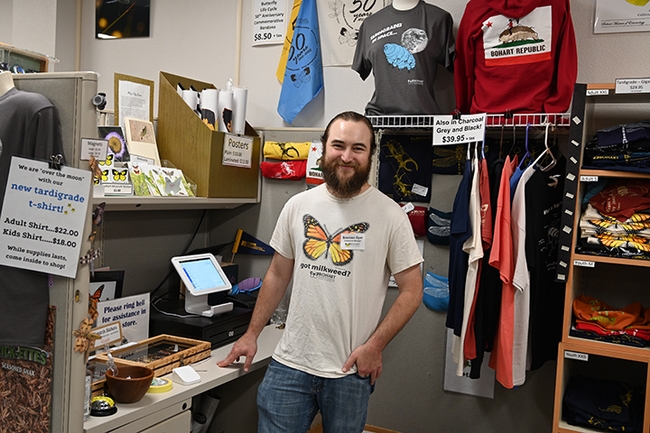
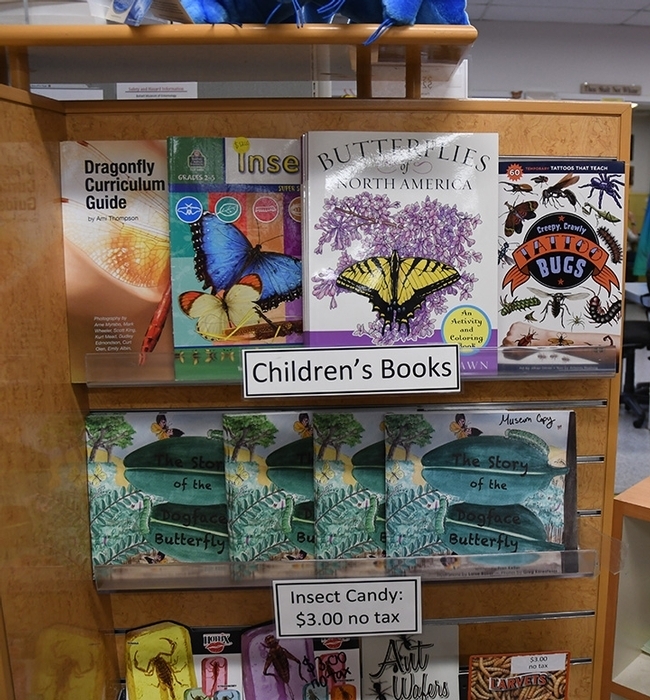
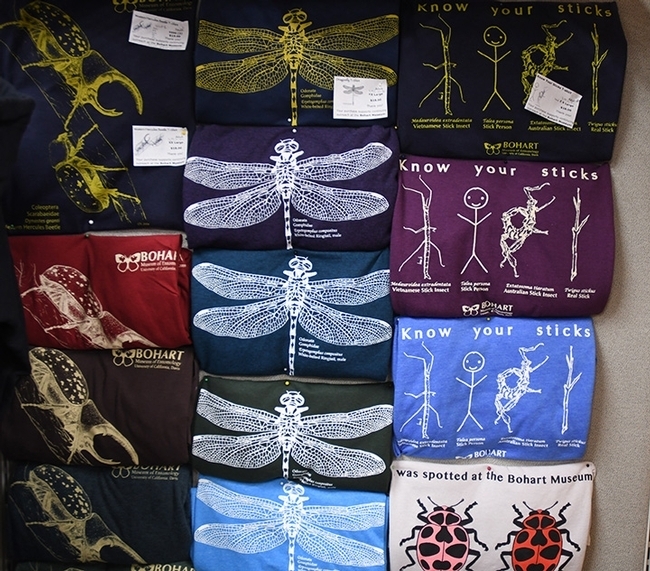
- Author: Kathy Keatley Garvey
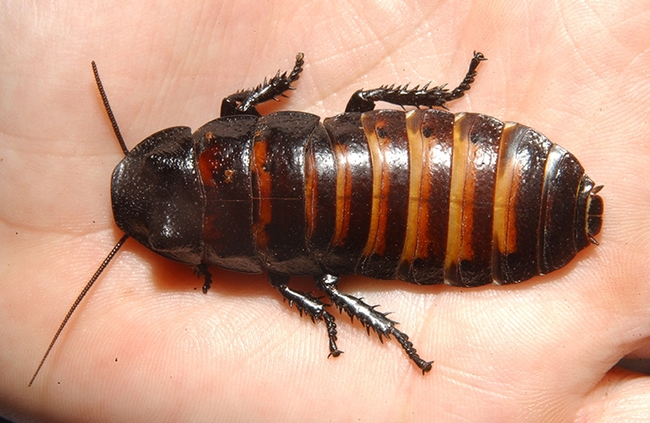
That's the theme of the Bohart Museum of Entomology open house when the scientists and associates greet visitors during the 109th annual campuswide UC Davis Picnic Day on Saturday, April 15.
The Bohart will be open from 10 a.m. to 2 p.m.
The location: Room 1124 of the Academic Surge building, 455 Crocker Lane, UC Davis campus.
The Bohart Museum, the seventh largest insect collection in North America, houses a global collection of eight million insect specimens. Plus, it features a live "petting zoo" of Madagascar hissing cockroaches, stick insects (walking sticks), tarantulas and many more. You'll meet Princess Herbert, a Brazilian salmon-pink bird-eating tarantula; Peaches, a Chilean rose hair tarantula; CocoMcFluffin, aChaco golden knee tarantula; and a Vietnamese centipede named Beatrice. Research associate Brittany Kohler serves as "the zookeeper."
The Bohart Museum also provides an insect-theme gift shop, stocked with books, posters, jewelry, t-shirts, hoodies and collecting equipment.
The Bohart Museum, founded in 1946 by the late professor Richard Bohart, is directed by UC Davis distinguished professor Lynn Kimsey, who received her doctorate in 1976 from UC Davis, studying with Bohart.
Entomological activities at Briggs Hall will take place from 9 a.m. to 5 p.m. (See Bug Squad)
Here's a video created by the College of Agricultural and Environmental Sciences that offers a quick look at the Bohart.
- Author: Kathy Keatley Garvey

Ironically, some folks proclaim their hatred or disgust for all things spiders throughout the year, but when the Halloween season arrives, they're thinking webs, fangs and eight legs as perfect decor for their door.
And to scare the bejeezus out of trick-or-treaters, the postal employee (who goes postal), cousins (who become distant) and other folks approaching the front porch who wish they hadn't.
So, it's good to see the Bohart Museum of Entomology come up with a "Got Legs?" spider t-shirt in its gift shop this week. It's a trapdoor spider, or what arachnologist Jason Bond of UC Davis studies. Bond is the associate dean, College of Agricultural and Environmental Sciences, and the Evert and Marion Schlinger Endowed Chair in Insect Systematics, UC Davis Department of Entomology and Nematology. In June, 2022, he co-hosted the American Arachnological Society's "Eight-Legged Encounters" conference at UC Davis. The focus on spiders also included a Bohart Museum's open house, "Eight-Legged Wonders!"
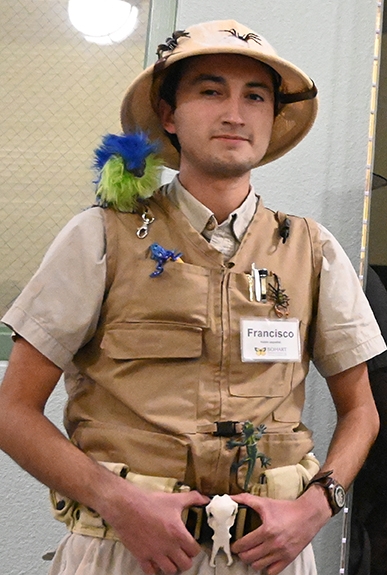
"We designed it together and Francisco did the art," Keller said.
"I think it's fantastic," said Lynn Kimsey, director of the Bohart Museum and a UC Davis distinguished professor of entomology. "I haven't seen any other t-shirts featuring spiders like this."
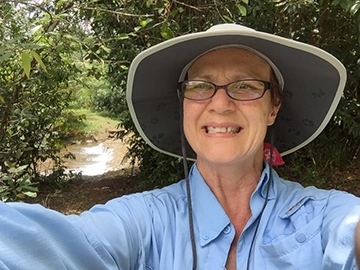
The gift shop offers the spider t-shirt in both youth and adult sizes. The youth t-shirt glows in the dark.
The Bohart Museum, founded in 1946, is located in Room 1124 of the Academic Surge Building, 455 Crocker Lane, UC Davis campus. Named for UC Davis professor and noted entomologist Richard Bohart, it is open to the public from 8 a.m. to noon, and 1 to 5 p.m., Mondays through Thursdays. The insect-themed gift shop, stocked with t-shirts, hoodies, books, posters, jewelry, insect-collecting equipment and more, is open year-around and is also online.
Now back to spiders. We remember asking Professor Bond five good reasons why folks should like spiders. (See Bug Squad blog)
- Spiders consume 400-800 million tons of prey, mostly insects, each year. Humans consume somewhere around 400 million tons of meat and fish each year.
- Spider silk is one of the strongest naturally occurring materials. Spider silk is stronger than steel, stronger and more stretchy than Kevlar; a pencil thick strand of spider silk could be used to stop a Boeing 747 in flight.
- Some spiders are incredibly fast – able to run up to 70 body lengths per second (10X faster than Usain Bolt).
- Athough nearly all 47,000-plus spider species have venom used to kill their insect prey, very few actually have venom that is harmful to humans.
- Some spiders are really good parents –wolf spider moms carry their young on their backs until they are ready to strike out on their own; female trapdoor spiders keep their broods safe inside their burrows often longer than one year, and some female jumping spiders even nurse their spiderlings with a protein rich substance comparable to milk.
Spiders rock! And yes, they got legs...
Eight. Of. Them.
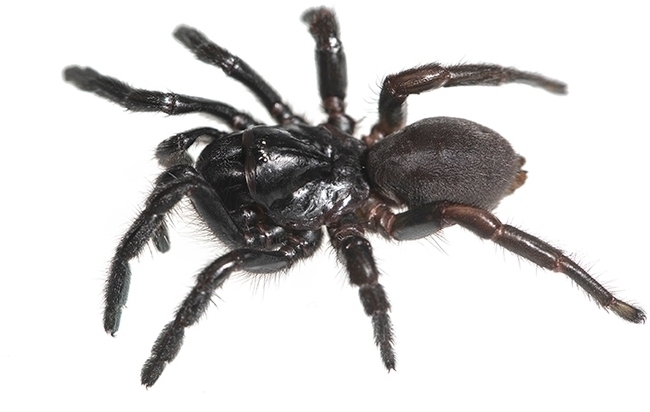
- Author: Kathy Keatley Garvey
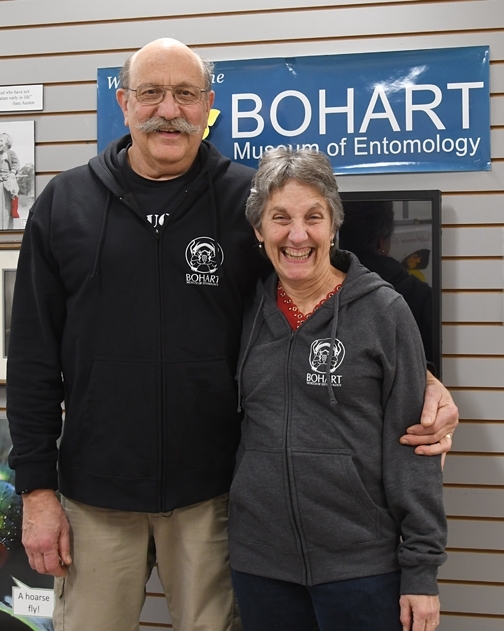
It certainly did the insect museum, the Bohart Museum of Entomology at the University of California, Davis.
Although the museum, located in Room 1124 of the Academic Surge Building, Crocker Lane, is closed to the public due to COVID-19 pandemic precautions, it's gearing up for the holiday season with online sales from the gift shop, which is stocked with insect-themed t-shirts, hoodies, jewelry, posters, books, insect-collecting equipment and other items. (See gift shop inventory)
“Your support enables us to fulfill our mission of documenting and supporting research in biodiversity, educating and inspiring others about insects, and providing state-of-the-art information to the community,” says Lynn Kimsey, director of the Bohart Museum and professor and former chair of the UC Davis Department of Entomology and Nematology.
The Bohart Museum, home of a global collection of nearly eight million insect specimens, houses the seventh largest insect collection in North America, and the California Insect Survey, a storehouse of the insect biodiversity of the state's deserts, mountains, coast, and the Great Central Valley. The Bohart is also the home of a live “petting zoo” (comprised of Madagascar hissing cockroaches, stick insects and tarantulas), and the year-around gift shop.
Here are some of the items available at the Bohart Museum:
- Earrings and necklaces (with motifs of bees, dragonflies, moths, butterflies and other insects)
-
T-shirts for babies, children and adults (walking sticks, monarch butterflies, beetles, dragonflies, dogface butterflies and the museum logo)
-
Insect candy (lollipops with either crickets and scorpions, and chocolate-covered scorpions)
-
Insect collecting equipment: bug carriers, nets, pins, boxes, collecting kits
-
Plastic insect toys and stuffed animals (mosquito, praying mantis, bed bug and others)
-
Handmade redwood insect storage boxes and handcrafted pens by Bohart Museum associate Jeff Smith
-
Posters (Central Valley butterflies, dragonflies of California, dogface butterfly), prints of selected museum specimens
-
Books by museum-associated authors:
- The Story of the Dogface Butterfly (Fran Keller, Greg Kareofelas and Laine Bauer), Insects and Gardens Insects and Gardens: In Pursuit of a Garden Ecology (Eric Grissell), Bumble Bees of North America: An Identification Guide (co-authored by Robbin Thorp), California Bees and Blooms: A Guide for Gardeners and Naturalists (co-authored by Robbin Thorp), Guide to Butterflies of the San Francisco Bay and the Sacramento Region (Art Shapiro), Butterfly Wish (Steve Stoddard, pen name S.S. Dudley), and multiple dragonfly books by Kathy Biggs
- The Story of the Dogface Butterfly (Fran Keller, Greg Kareofelas and Laine Bauer), Insects and Gardens Insects and Gardens: In Pursuit of a Garden Ecology (Eric Grissell), Bumble Bees of North America: An Identification Guide (co-authored by Robbin Thorp), California Bees and Blooms: A Guide for Gardeners and Naturalists (co-authored by Robbin Thorp), Guide to Butterflies of the San Francisco Bay and the Sacramento Region (Art Shapiro), Butterfly Wish (Steve Stoddard, pen name S.S. Dudley), and multiple dragonfly books by Kathy Biggs
- Bohart logos (youth tshirts, stickers and patches)
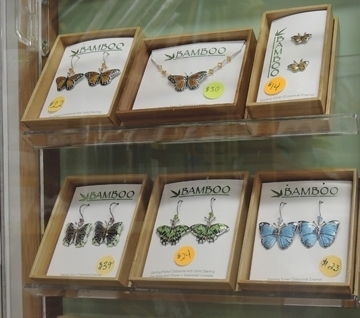
Also available are gift memberships and the ability--through donations to the biolegacy program--to name insect species.
The Bohart Museum of Entomology, founded in 1946 and dedicated to teaching, research and service, is named for noted entomologist Richard Bohart, who taught entomology at UC Davis for more than 50 years, beginning in 1946, and chaired the Department of Entomology from 1963-1967.
Said Kimsey: "His publications include three of the most important books on the systematics of the Hymenoptera, including the well-used volume Sphecid Wasps of the World. His journal publications total over 200 articles. He revised many groups of insects, discovered new host-associations or geographic ranges, and described many new species."
For more information, email the Bohart Museum at bmuseum@ucdavis.edu or access the website at http://bohart.ucdavis.edu.
